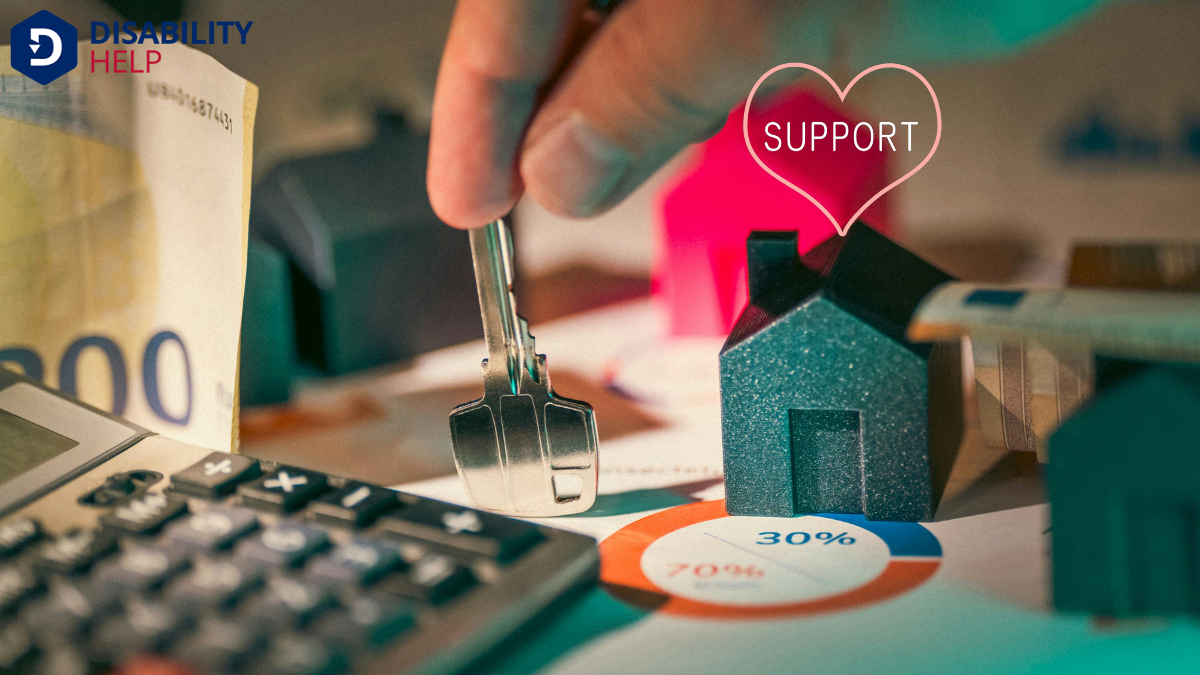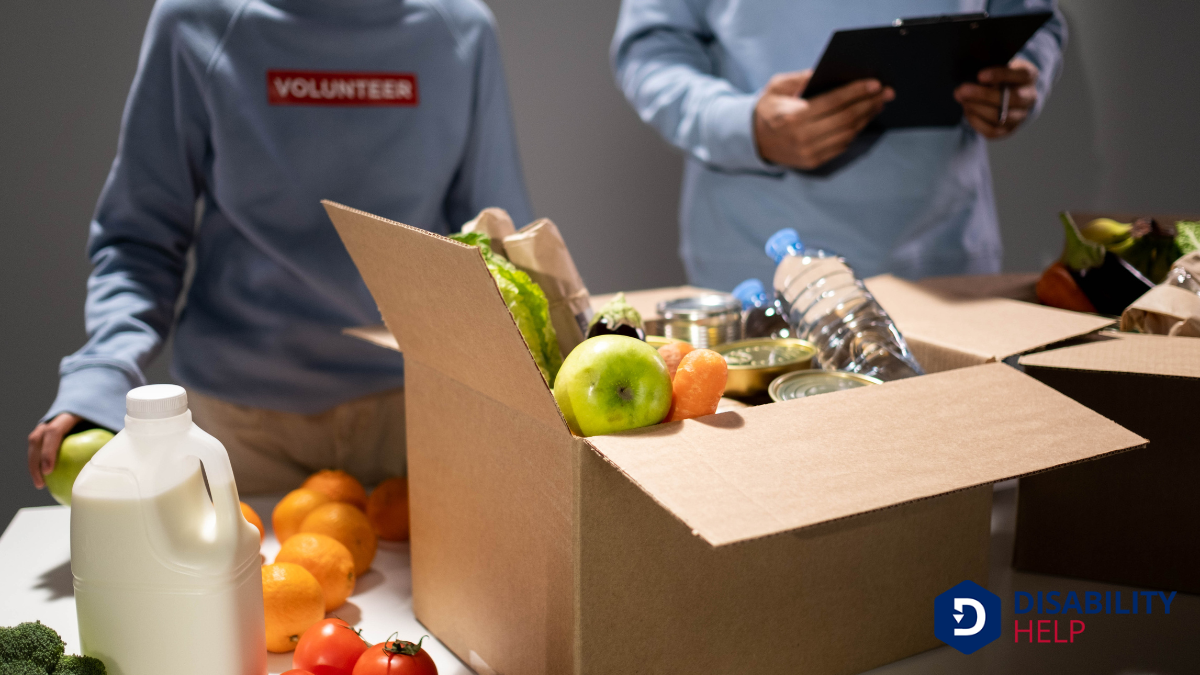When we think about life on disability, it's easy to focus on limitations. However, there are numerous extra benefits available that can truly enhance our quality of life. From healthcare assistance to housing support, and even transportation discounts, these resources can make a significant difference. Imagine having access to affordable housing or reduced utility bills. Curious about how these perks can change our daily lives? There's much more to uncover.
Key Takeaways
- MedicaidA U.S. government program that provides health coverage to eligible low-income individuals, includin... and MedicareA U.S. federal health insurance program for people aged 65 and older, and for some younger people wi... offer extensive healthcare coverage to ease medical expenses for those on disability.
- LIHEAP provides financial assistance for heating and cooling costs to reduce utility bill burdens.
- Section 8 and rental vouchers help secure affordable housing for individuals on disability.
- SNAP and food banks offer essential nutrition support to ensure access to healthy food options.
- Recreational and cultural discounts enhance quality of life through affordable access to enriching experiences.
Healthcare Assistance Programs
When we think about healthcare assistance programs, it's important to recognize how they can greatly ease the financial burden for individuals on disability.
These programs, like Medicaid and Medicare, offer essential support by covering medical expenses that might otherwise be overwhelming.
We realize that maneuvering through these options can seem intimidating, but they're designed to provide extensive coverage, ensuring access to necessary treatments and medications.
Housing Support Options

Let's explore how we can make housing more affordable and accessible for those of us with disabilities.
Affordable housing programs and rental assistance vouchers are two key options that might help us secure a stable living environment.
Understanding these resources can guide us in finding a home that meets our needs without breaking the bank.
Affordable Housing Programs
For individuals with disabilities, finding affordable housing can be a formidable challenge, but there are programs designed to help. We can explore options such as public housing and supportive housing initiatives.
Public housing is managed by local housing authorities and provides reduced rent based on income, ensuring it remains affordable. It's a valuable resource that can lift some financial burden off our shoulders.
Supportive housing offers another lifeline, combining affordable rent with services like case managementA service that helps individuals with disabilities access and coordinate necessary services, includi..., helping us maintain independence. These programs aim to create a stable living environment, essential for our well-being.
Rental Assistance Vouchers
Although traversing the housing market can be overwhelming, rental assistance vouchers offer an important support system for many of us with disabilities.
These vouchers help bridge the gap between our income and the cost of renting a home. Programs like Section 8 provide financial assistance, allowing us to live in safe, affordable housing.
We need to apply through local public housing agencies, which assess our eligibility based on income and family size. Once approved, the voucher covers a portion of our rent directly to landlords.
This support eases financial strain, giving us more stability and security. It's vital to understand the process and qualifications, so let's reach out to local agencies for guidance and guarantee we make the most of this valuable resource.
Transportation Discounts and Services
When we consider transportation discounts and services for those with disabilities, accessible transit options and reduced fare programs immediately come to mind.
These offerings not only ease financial burdens but also enhance mobility and independence.
Let's explore how these benefits can make our daily travels smoother and more affordable.
Accessible Transit Options
Maneuvering public transportation can be a challenge for those of us with disabilities, but fortunately, many cities and transportation providers are stepping up with accessible transit options.
These options include specialized vehicles equipped with ramps or lifts, making boarding easier for individuals using wheelchairs or mobility devices. Some transit systems offer door-to-door paratransit servicesTransportation services designed to accommodate individuals with disabilities who cannot use regular..., ensuring we reach our destinations safely and conveniently.
Moreover, audible and visual announcements on buses and trains help those with visual or hearing impairments stay informed about stops and route changes.
Many transit agencies also provide training programs, so we can become more confident in using these services. It's important to check local transit authority websites or contact their offices to learn about specific options available in our area.
Reduced Fare Programs
Alongside accessible transit options, many cities offer reduced fare programs that make public transportation more affordable for individuals with disabilities.
These programs are a lifeline, helping us access essential services and stay connected with our communities. By applying for a reduced fare card, we can considerably cut down on our transportation costs.
Typically, these programs require proof of disability, such as a letter from a doctor or a benefits statement. Many transit authorities provide easy online applications, ensuring the process is straightforward.
It's vital we check with our local transit agencyThe capacity of individuals with disabilities to act independently and make their own choices. to understand the specific requirements and benefits available in our area. Taking advantage of these programs can greatly enhance our mobility and independence, making daily travel more manageable.
Utility Bill Assistance
Although managing finances on a disability income can be challenging, there are programs designed to help ease the burden of utility bills.
Let's explore some options that can lighten our load:
- Low Income Home Energy Assistance Program (LIHEAP): This federal program provides financial support to help cover heating and cooling costs.
- Weatherization Assistance Program: This initiative aims to improve energy efficiency in homes, reducing our overall utility expenses.
- Utility Company Discounts: Many utility providers offer special rates or discounts for individuals with disabilities. It's worth reaching out to check eligibility.
- Local Community Programs: Some communities have local assistance programs that can provide temporary relief or subsidies for utilities.
Food and Nutrition Programs

How can we guarantee that our nutritional needs are met while living on a disability income? One key resource is the Supplemental Nutrition Assistance Program (SNAP). SNAP provides funds to purchase groceries, making sure we can access healthy food.
To apply, we need to contact our local SNAP office, where they'll guide us through the process.
Additionally, we might benefit from the Women, Infants, and Children (WIC) program if we're pregnant or have young children. WIC offers nutrition education and food assistance.
Local food banks and community food programs also provide essential support by offering fresh produce and pantry staples.
It's important to explore these options and take advantage of the resources available. Together, we can guarantee our dietary needs are met, promoting a healthier lifestyle.
Education and Training Opportunities
When living on a disability income, finding ways to enhance our skills and knowledge can open doors to new opportunities.
Fortunately, there are programs available to help us access education and training. By taking advantage of these resources, we can pursue personal growth and potentially improve our financial situation.
Here are some options we can explore:
- Vocational RehabilitationServices that help individuals with disabilities prepare for, obtain, and maintain employment. Services: These offer training tailored to our specific interests and abilities.
- Pell Grants: Financial aid that doesn't need to be repaid, allowing us to attend college or technical schools.
- Work Incentive Programs: These provide education support while we maintain disability benefitsFinancial assistance provided to individuals who are unable to work due to a disability, such as Soc....
- Online Courses: Flexible and often free, they suit our schedules and learning pace.
Let's utilize these opportunities to build a brighter future.
Employment Support and Resources
While living with a disability can pose unique challenges, we're not alone in our journey toward meaningful employment. Various support and resources are available to help us succeed in the workforce.
Vocational rehabilitationThe process of helping individuals with disabilities achieve and maintain their optimal physical, se... services offer personalized assistance, including career counselingProfessional guidance provided to individuals with disabilities to help them explore career options ..., job training, and placement support. These services aim to match our skills with suitable job opportunities, considering our unique needs.
We can also explore programs that provide accommodationsModifications or adjustments in healthcare settings to support patients with disabilities. at work, ensuring equal accessThe principle that all individuals, including those with disabilities, should have equal opportunity... and opportunity. Organizations like the Job Accommodation Network (JAN)A U.S. service that provides free, expert, and confidential guidance on workplace accommodations and... offer guidance on workplace adjustments and technologies that can make our work environment more accessible.
In addition, networking and support groups connect us with others facing similar challenges, fostering community and sharing valuable insights for overcoming employment barriers.
Recreational and Cultural Discounts

Embracing the opportunities available to us, we can enjoy a variety of recreational and cultural discounts that enhance our quality of life.
These benefits open doors to experiences that might otherwise be out of reach. Whether it's exploring local attractions or engaging in creative activities, we've access to enriching options.
Here's where we can often find discounts:
- Museums and Art Galleries: Many offer reduced or free admission for those of us on disability benefits.
- Theaters and Concerts: Some venues provide discounted tickets, allowing us to enjoy live performances.
- National and State Parks: Passes may be available at a lower cost, encouraging us to explore nature.
- Community Classes and Workshops: Local centers often offer affordable classes in art or fitness.
These discounts foster inclusionThe practice of creating environments in which any individual or group can be and feel welcomed, res... and joy in our lives.
Conclusion
To summarize, we can access a range of extra benefits to enhance our lives while on disability. From healthcare assistance programs like Medicaid and Medicare to housing support options such as Section 8 vouchers, these resources help us live more comfortably. We shouldn't overlook transportation discounts and utility bill assistance, which ease daily burdens. Plus, food programs, educational opportunities, and recreational discounts enrich our experiences, ensuring we lead fulfilling, engaged lives within our communities.






